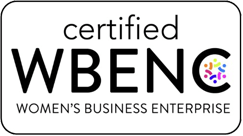In the dynamic world of pharmaceuticals, staying ahead is not just about groundbreaking discoveries in the lab but also about effective communication of these novel technologies to doctors, patients, patient caretakers and payers. The continuous evolution of omnichannel digital technologies has the journey to align Information Technology (IT) and marketing departments comes with its own set of challenges, often leading to communication gaps and all the problems that arise resultant of that.
Let’s delve into each of these challenges and explore practical solutions to bridge the gap.
1. Embrace Clear Communication Channels:
Miscommunication and the lack of clear channels can be a major hurdle. Assign dedicated leaders and communication channels for every project, ensuring that information flows seamlessly between IT and marketing teams. This streamlines the decision-making process and reduces project delays.
2. Overcome Resource Constraints:
Resource limitations can hinder progress, particularly when even minor content changes take weeks to implement. A prescription for this challenge is to grant ‘contractor’ status to an external agency with backend access. This external support can help pull through changes swiftly and offer the flexibility to onboard additional IT resources as needed.
3. Bridge Skillset Mismatches:
Skillset misalignment between IT and project requirements often leads to delays due to excessive hand-holding. To counter this, consider empowering external agencies, upskilling your in-house IT team, or bringing in senior IT professionals for more complex tasks.
4. Establish Uniform Workstreams:
Varying workstreams can lead to collaboration issues. To mitigate this, define clear workstreams during project kickoff meetings involving both the IT and marketing teams. Appoint a lead project manager to harmonize processes, facilitating smoother project execution.
5. Streamline Documentation and Storage:
Inadequate documentation and sharing can be a significant roadblock. Implement a robust file-sharing and storage system, such as SharePoint or Teams, or integrate a project management tool like Jira. This ensures a well-organized repository, fostering efficient collaboration and real-time knowledge sharing.
6. Future-Proof Your Strategies:
Scalability and adaptability are key. Build strong relationships with senior IT leadership to ensure your strategies remain aligned and adaptable in the long run. Emphasize the shared purpose of improving patients’ lives to maintain cohesion between IT and marketing departments.
7. Digitize Project Management:
Efficient project management is paramount. Shift away from the limitations of email communication and adopt a real-time digital tool like Jira. Appoint a change agent for integration and identify champions within your teams who can promote its effective use.
As pharmaceutical companies tread the path of digital transformation, they are not just embracing technology for its own sake. Instead, they are adopting a holistic approach, recognizing the importance of effective communication and collaboration between IT and marketing to drive their mission forward. This prescription for success serves as a guide to help pharma companies harmonize these two essential facets of their operations, ultimately leading to better patient care and improved outcomes. By following these steps, the pharmaceutical industry is well-equipped to navigate the ever-changing terrain of healthcare in the 21st century, and in doing so, redefine the future of medicine.




